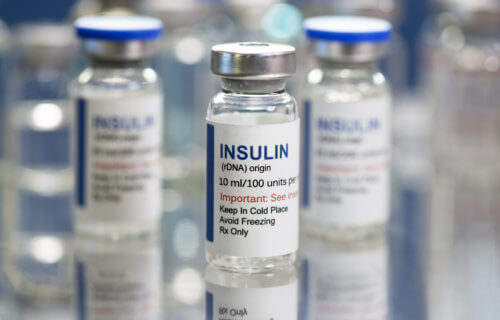SANTA MONICA, Calif. — Mentioning prescription drugs prices in the United States is guaranteed to start a fiery debate. A new report is adding fuel to the fire after revealing the state of the nation’s insulin market. Researchers for the RAND Corporation find the common diabetes drug costs consumers over eight times more than it does in dozens of other high-income countries.
According to their research, the average price per unit across all versions of insulin in the U.S. was $98.70. This study looks at the insulin prices across 32 nations and notes prices skyrocketed in America between 2012 and 2016. One federal report adds average wholesale-acquisition prices for insulin jumped by 15 to 17 percent each year during this time. That includes prices for rapid-acting, long-acting, and short-acting insulins in the U.S.
When it comes to prices patients are actually paying, researchers for the non-profit policy think tank say annual insulin spending doubled from $1,432 to $2,853 for adults with employer-sponsored health insurance during these four years.
“This analysis provides the best available evidence about how much more expensive insulin is in the U.S. than in other nations around the world,” says lead study author Andrew Mulcahy in a press release. “Prices in the U.S. are always much higher than other nations, even if you assume steep discounts to manufacturer prices in the United States.”
Insulin prices in other countries
When looking at what other countries pay for their diabetes drugs, RAND finds most countries are paying a fraction of the U.S. price. The American price ranges from 3.8 times higher than what they are in Chile, to a staggering 27.7 times higher than Turkey.
U.S. insulin prices are also 5.9 times higher than Japan, 6.3 times higher than Canada, and 8.9 times higher than the United Kingdom. Researchers note the study focuses on the manufacturing price of these drugs across the world. This means the price a patient pays is likely to be much lower once rebates and discounts are factored in.
Despite these savings, the report finds an American consumer still pays about four times more than someone in another country.
The study gathered estimates on international insulin prices by reviewing industry-standard data on insulin sales and volume for 2018. The results also reveal U.S. prices on analog (or laboratory grown) insulin were higher in comparison to human insulins. Prices for rapid-acting versions were higher than long and short-acting varieties as well.
RAND’s report was sponsored by the Office of the Assistant Secretary for Planning and Evaluation, part of the U.S. Department of Health and Human Services.
Like studies? Follow us on Facebook!
